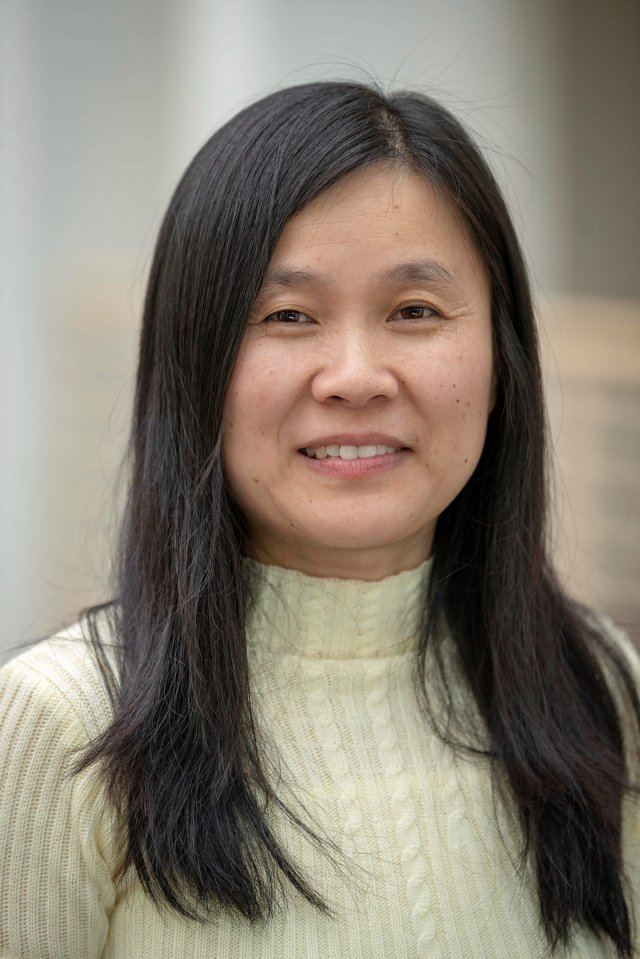Meet EPA Physical Scientist Xiaoyu Liu, Ph.D.

What research are you working on right now?
My research focuses on developing methods and techniques to understand the impact that indoor pollution sources have on human exposure and outdoor air quality. I’m currently working on conducting indoor emission and exposure testing, determining parameters for understanding the pollutants from the source to air, airborne particles, dust and interior surfaces in the indoor environment, and improving indoor source and indoor air quality modeling tools.
Tell us about your background.
I received my BS in chemistry and MS in analytical chemistry in China. I graduated from UNC Chapel Hill with a PhD in environmental science and engineering. When I was at UNC, I studied atmospheric photochemistry of air pollutants. After graduation, I first worked as a contractor for EPA, then became an EPA employee in 2006.
When did you first know you wanted to be a scientist?
I didn’t always know I wanted to be a scientist. Both my parents were chemistry professors, so I chose to study chemistry as my major without too much thinking. When I entered the graduate program at UNC Chapel Hill, the challenge of environmental science intrigued me. I found purpose in studying science that has practical real-world applications and could protect human health and the world around us.
What do you like most about your research?
I like that the findings from my research can directly improve everyone’s daily life. Most people spend roughly 90% of their time indoors, where typical contaminant levels are 2-5 times higher than those outdoors in the US. Changes in building design to improve energy efficiency, advances in construction technology using synthetic materials, and existing and new chemicals used in consumer products have led to a more comfortable life but also readily produce high concentrations of airborne contaminates. My research develops methods and collects data to understand a variety of chemicals that are emitted from building materials, furnishings, consumer products, human activities such as cooking and cleaning, and other sources. It helps estimate indoor exposure, develop strategies for the design, production and use of safer chemicals, and informs risk assessment and policy decisions to minimize exposures and prevent pollution.
How does your science matter?
Indoor pollutant sources surround us every day. Many of the EPA’s priority pollutants, including formaldehyde, per- and polyfluoroalkyl substances, polychlorinated biphenyls, flame retardants, phthalates, etc., are released from common building materials and consumer products. Exposures to indoor air pollutants have the potential to cause disability, disease, and even death, especially for sensitive populations like children and the elderly. Human exposure to these chemicals occurs through inhalation, dermal contact, and ingestion. Thus, understanding their movements in indoor environments is critical to minimize risks to wildlife and human health. My research identifies and characterizes sources and fate and transport of indoor air pollution and provides methods and data for exposure assessment and risk evaluation in support of the Agency’s mission on improving air quality under the Clean Air Act and ensuring safety of chemicals in the marketplace under the Toxic Substances Control Act.
If you weren’t a scientist, what would you be doing?
I would like to be a preschool or elementary school teacher. I love kids and would enjoy working with young people to help them blossom into well-rounded students. Also, it would make me feel young.
What advice would you give a student interested in a career in science?
My advice for young people interested in a career in science would be to first find out your interest and become passionate. Once you have the passion in a science area, you will have the motivation in the work that you are doing and have a lot of fun.
If you can have any superpower, what would you choose?
I would like to slow down the time. I wish I had 36, 48 hours a day so that I can do a lot more things!
What do you think the coolest scientific discovery was and why?
An ocean on Jupiter's moon. This discovery suggests the possibility of finding life beyond Earth, something I’ve always been curious about.
If you could have dinner with any scientist, past or present, who would you choose and what would you talk about?
America’s first environmentalist, George Perkins Marsh. He was the first who raised the concerns about human impacts on the environment in the US. I would like to ask him what motived him to write his book Man and Nature.
What do you think is our biggest scientific challenge in the next 20/50/100 years?
In the next 20-100 years, we need to save the earth from the pollution we have created in our past, present, and future. Through our daily life activities and industrial and agriculture development, pollutants continuously enter the environment, not only damaging the quality of land, water, and air on earth but also adversely impacting human health, other species and ecosystems and depleting natural resources. People are aware of the dangerous consequences now and have started cleaning up and restoring areas that have been impacted by contaminants. However, there will be huge technical challenges ahead of us to stabilize or reverse the damage that has already been done.
Editor's Note: The opinions expressed herein are those of the researcher alone. EPA does not endorse the opinions or positions expressed.
